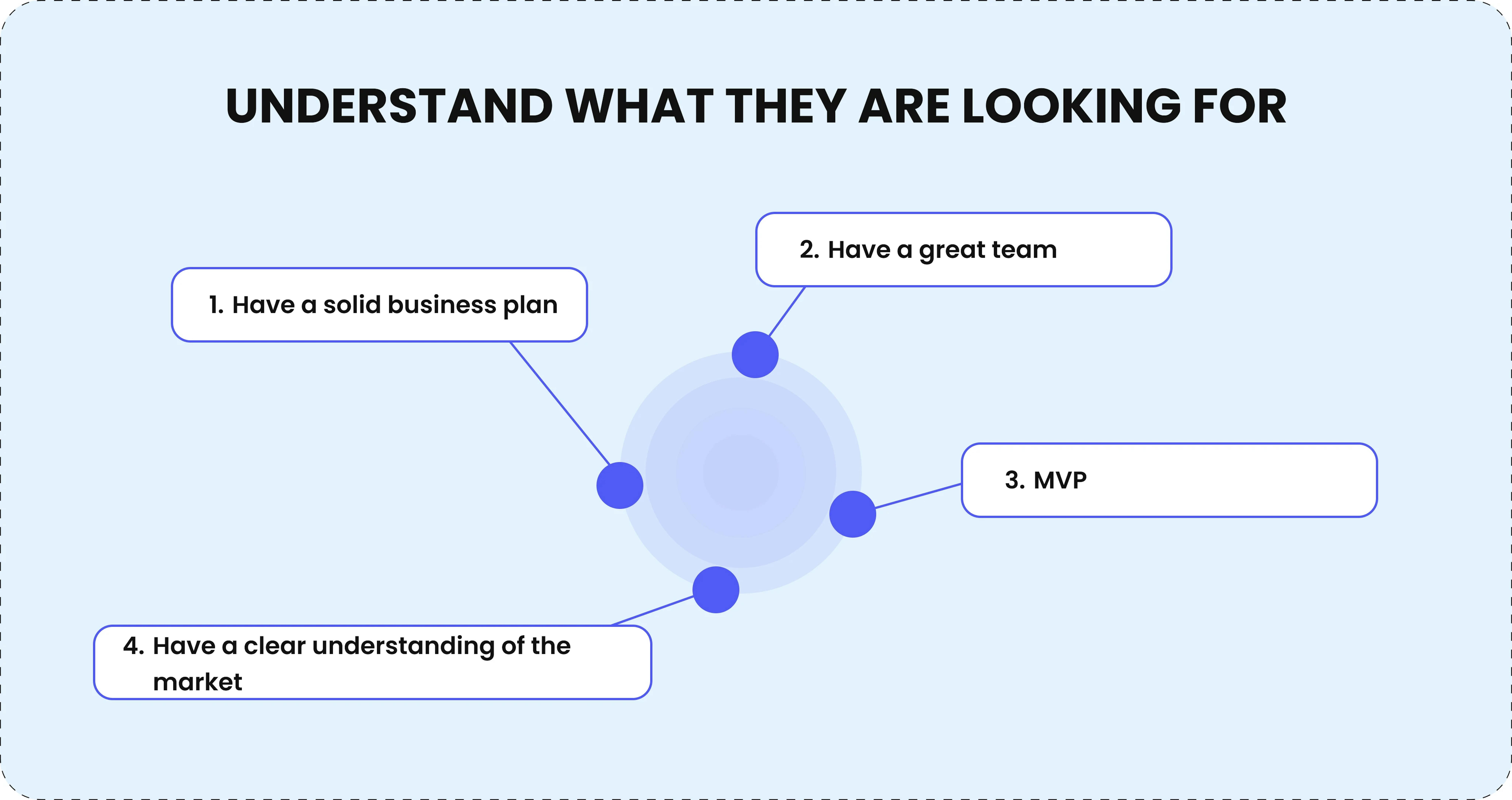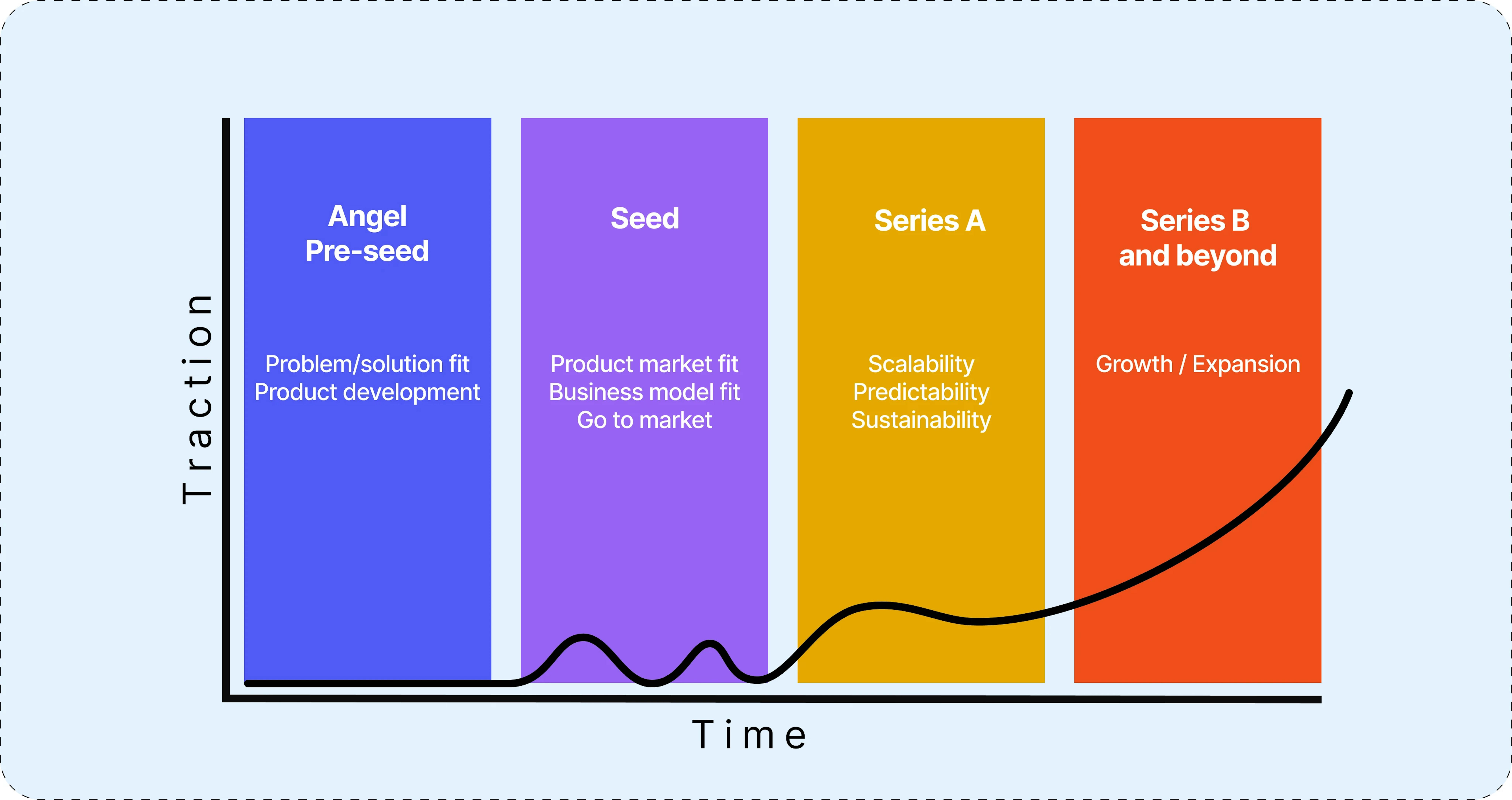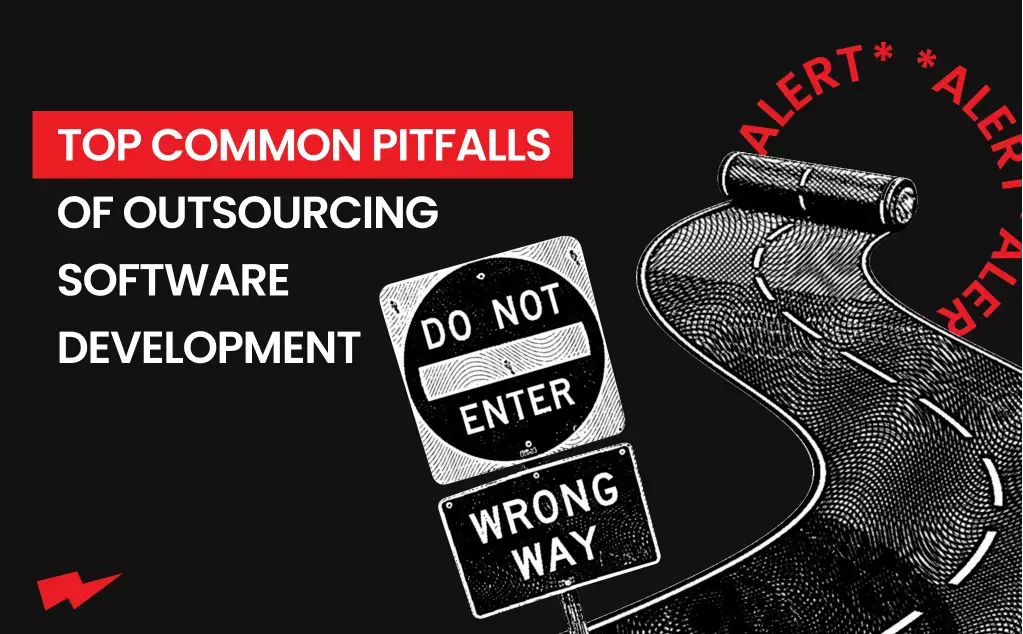Did you know the mobile app market is expected to reach $278 billion by 2026? This explosive growth is attracting investors eager to back the next big app. However, securing investment requires more than just a brilliant idea.
This article will equip you with the knowledge you need to understand your ideal app investors, how to bring them on and catch their attention, and what to expect during the fundraising process. At the end of this article, you’ll find special recommendations from Oleg Puzanov, CSO of Mad Devs.
Understanding investors
While securing financial resources is crucial, securing the right investor goes beyond just the money. Investors can be invaluable partners who offer a range of benefits beyond the initial funding.
Instead of just listing different investor types, we’ve added their motivations.
Types of investors

1️⃣ Angel investors — Wealthy individuals who back early-stage startups with high growth potential.
Pros:
- Passion: Often drawn to innovative ideas that align with their personal interests or can make a positive impact.
- Financial return: While seeking good returns, they might be more flexible on timelines compared to VCs.
- Mentorship: Enjoy being involved with early-stage companies and providing guidance.
Cons:
- Angel investments are typically smaller than VC funding.
- Finding angels who believe in your vision can be challenging.
2️⃣ Venture capitalists (VCs) — Firms that invest in high-growth startups
Pros:
- High financial return: VCs expect high returns within a specific timeframe, often through acquisitions or IPOs.
- Strategic fit: They may invest in apps that complement existing portfolio companies or create new market opportunities.
- Expertise: VCs offer valuable industry knowledge and connections to help startups scale quickly.
Cons:
- VCs expect high returns within a specific timeframe, which can be stressful.
- Meeting VC investment criteria can be difficult for early-stage startups.
3️⃣ Crowdfunding platforms — Online platforms that connect individuals or businesses seeking funds with a large pool of potential investors or donors.
Pros:
- Democratization of investment: Allow regular people to invest in startups for smaller amounts.
- Marketing and community building: Crowdfunding can generate early buzz and attract potential customers for the app.
- Financial return: Investors hope for a significant investment return if the app succeeds.
Cons:
- Reaching your funding goal requires a strong marketing campaign.
- Total funding raised through crowdfunding may not meet your needs.
4️⃣ Corporate venture capital (CVC) — Investment arms of established companies looking for innovative technologies or solutions
Pros:
- Access to innovation: CVCs may invest in startups developing cutting-edge technologies or disruptive business models that could benefit their core business.
- Generate financial returns: While not the primary driver, CVC investments can potentially generate significant financial returns if the startups they invest in become successful.
- Develop strategic partnerships: Investing in startups can foster valuable partnerships for the corporation. They can learn from the startup's agility and gain insights into emerging trends.
Cons:
- Your startup's technology or solution needs to align with the corporation's goals.
- Limited control: CVCs may seek influence over your startup's direction.
Where to find investors?
The methods described below are applicable for finding investors for mobile applications and if you are developing a startup in another area. The main thing is to consider the specifics of your industry.
App idea funding contests and innovational festivals
Competitions offer a chance to win prize money and gain valuable exposure for your app's concept. Festivals provide a platform for foinders to pitch their app ideas, prototypes, or businesses to potential investors, partners, and customers. Research upcoming events that align with your target market and app category.
Target angel investors
Identify angel investors with a history of funding startups in your app's niche. Tailor your pitch to highlight the potential for high returns and social impact (if applicable) that resonate with angel investors.
Leverage your network
Connect with individuals in the tech and business communities who might know potential investors. Attend industry events and conferences to build relationships and spread the word about your app.
Connect with private investors
Research venture capital firms and private equity groups that invest in early-stage companies. Ensure your app aligns with their investment focus and demonstrates a clear path to profitability.
Crowdfunding campaigns
Platforms like Kickstarter and Indiegogo allow you to raise capital directly from the public. A successful crowdfunding campaign can validate audience interest and generate pre-launch buzz.
Finding co-founders with investment potential
Consider finding co-founders with complementary skills and experience. A strong team with diverse expertise can be more attractive to potential investors.
Acceleration programs
These programs provide mentorship, resources, and sometimes even funding to high-potential startups. Research accelerators that focus on your industry or stage of development. Examples include Y Combinator, Techstars, and AngelPad.
💡 Read our latest article "A Product Mindset: The Key to Clients for a Service Company" to learn more about Mad Devs' experience with acceleration programs.
How to make a perfect investor list
Building an investor list involves more than simply compiling names and contact information. It emphasizes the importance of quality over quantity, ensuring your list is tailored to attract the right kind of investors for your startup.
There is a belief that the ideal investor list size is: 100 times your target funding amount. For instance, if you aim to raise $1 million, you should aim for a list with 100 potential investors.
While seemingly large, this approach acknowledges the realities of fundraising. Securing investment often requires casting a wide net. You only need a few investors to say yes to reach your funding goals. By presenting to a larger pool of carefully selected investors, you increase your chances of securing the required capital.
Here are the key takeaways:
- List down your immediate network: This includes friends, family, and former colleagues. They may not be the perfect fit, but they can be a good starting point and may provide valuable introductions.
- List down investors from the free OpenVC database: You can search for investors based on specific criteria such as geography, industry, and investment stage. This is a great way to find investors who are a good fit for your company.
- Expand your search to other investor databases: There are a number of online resources with investor lists. Some popular options include Crunchbase, PitchBook, and NVCA. These can be helpful for finding more targeted investors.
- Сlean up your investor list: This stage includes removing duplicates and making sure all investors meet your criteria. You don't want to waste your time pitching to investors who aren't a good fit for your company.
Remember, a comprehensive investor list is just the first step. Once you have a solid foundation, you can dedicate your efforts to crafting a compelling fundraising strategy that effectively targets these investors and increases your chances of success.
What do investors look for?
Securing mobile app investor interest hinges on demonstrating the app's potential for success. Here are key factors that grab investor attention:

1. Clear business plan
How will the app generate revenue and become profitable?
It's essential to provide a clear roadmap outlining how the app will generate revenue and achieve profitability. This plan should detail pricing strategies, user acquisition methods, and projected financial growth.
2. Strong team with relevant experience
Does the founding team have the skills and experience to build and run a successful business?
Investors back strong teams. Showcase the skills and experience of your founding team, highlighting their ability to build, launch, and scale a successful app business. If you're interested in building a startup with an outsourcing service, check our related article:
3. Promising market with a clear need
Does the app stand out from existing solutions in the market?
Investors seek solutions that have a large, identifiable target audience. Explain how your app stands out from existing competitors and why users will choose it over others.
4. Well-developed plan (revenue model, marketing strategy)
Can the app user base and revenue grow significantly over time?
A well-defined monetization strategy and a plan for substantial user base growth are crucial. Investors want to see how your app will generate significant revenue and attract a large user base over time.
5. Strong pitch
It's critical to create a captivating presentation that succinctly outlines your app's vision, target audience, monetization strategy, and development roadmap.
6. Minimum viable product (MVP)
Having a functional MVP showcases your app's core features and functionalities. It allows you to gather user feedback and demonstrate the app's potential to investors.
Here's a summury of common mistakes app founders make when seeking investors:
| Mistake #1: Lack of a solid plan and invalidated idea Mistake #2: Weak pitch and unprofessional presentation Mistake #3: Not having an MVP Mistake #4: Unrealistic funding request Mistake #5: Targeting the wrong investors Mistake #6: Giving up after one rejection |
How to prepare for investors
Turning your innovative app idea into a reality requires captivating investors. Here's how to prepare and deliver a winning pitch that secures funds for your mobile app:
Business plan:
Executive summary
Imagine you have 1 minute to convince an investor. This concise introduction should highlight your app's core value proposition, your team's expertise, and the funding amount you're seeking.
Pro tip: Tailor your executive summary to each investor. Emphasize aspects that align with their specific interests and investment goals.
Market analysis
- Define your target market – who are you trying to reach? How large is this audience?
- Analyze your competition – what existing solutions are there? How does your app offer a unique value proposition (USP)? Highlight your app's competitive advantage.
- Demonstrate market growth potential – show investors the industry is poised for growth and your app is positioned to capitalize on it.
Pro tip: Use data and statistics to support your claims. Back up your market analysis with reliable sources.
Product development
- Explain your app's key features and functionalities in detail.
- Describe the technology stack you'll use for development.
- Include a development roadmap that outlines your app's evolution over time. This showcases your long-term vision.
Pro tip: Don't overload investors with technical jargon. Explain features in a way they'll understand, focusing on the benefits they provide to users.
Marketing & sales strategy
- Detail your user acquisition plan – how will you reach your target audience?
- Outline the marketing channels you'll leverage (social media, app store optimization, etc.)
- Define your monetization strategy – how will the app generate revenue? Will it be through subscriptions, in-app purchases, or advertising?
Pro tip: Create a realistic financial model that forecasts revenue streams and expenses over time. Demonstrate a clear path to profitability.
Financial projections
- Create realistic financial projections for revenue, expenses, and profitability over a specific timeframe (e.g., 3-5 years).
- Show investors you have a clear understanding of the financial implications of your app.
Pro tip: Be conservative with your projections. It's better to under-promise and over-deliver.
Pitch deck:
- Develop a concise and captivating pitch that summarizes your app, your target market, its unique value proposition, and its potential for success.
- Highlight the problem your app solves, the market opportunity it addresses, and the revenue streams it will generate.
- Prepare for potential investor questions. Practice your pitch in front of trusted advisors or colleagues to receive constructive feedback and ensure your delivery is polished and confident.
Pro tip: Investors are drawn to passionate founders with a compelling story. Craft a narrative that captures your vision, highlights the team's journey, and showcases the impact your app will make.
Stages of funding
Here's a roadmap outlining the various stages of mobile app funding and what to expect at each step:

- Pre-seed funding
This initial stage comes before you even consider formal fundraising. It's where you solidify your business concept and potentially build a basic prototype. Investments at this level are typically small and often come from the founders' personal savings, friends, or family. - Seed funding
This is where you actively seek funding to develop your product or service. Seed funding allows you to build your MVP, validate your concept with real users, and start generating traction. Investors at this stage include angel investors, early-stage venture capitalists, and startup incubators. - Series A funding
This signifies progress for your startup. Here, the focus shifts towards scaling your business and product. Series A funding allows you to invest in marketing and sales efforts, expand your team, and refine your product based on user feedback. Investors at this stage are primarily venture capital firms, "super angels" (wealthy individuals who invest in startups), and even large corporations looking for promising ventures. - Series B funding and beyond
These funding rounds are all about growth and expansion. Series B funding helps you solidify your future plans, whether it's international expansion, significant team growth, or major product development initiatives. Subsequent funding rounds (Series C, D, etc.) might focus on preparing for an Initial Public Offering (IPO), exploring strategic partnerships, or venturing into new markets.
We've explored the different avenues for securing funding for your app. Now, let's delve into a crucial aspect pertaining to investors.
What's a fair percentage for an investor?
There's no one-size-fits-all answer to what mobile app investors a "fair" percentage. It depends on several factors, including the funding stage and investor type.
Here's a table summarizing the typical ranges:
| INVESTOR TYPE | FUNDING STAGE | EQUITY PERCENTAGE RAGE |
|---|---|---|
| Angel investors | Seed | 20-30% |
| Venture capitalists | Seed / Series A | 20-40% |
| Venture capitalists | Series B+ | 10-20% |
Special recommendations from a CSO's perspective
Here are some crucial recommendations for choosing the right investor for your product based on insights from Oleg Puzanov, CSO at Mad Devs:
It's crucial to find an investor who shares your product's values, goals, and mission. This ensures a harmonious partnership and a shared vision for the future. The investor should clearly understand your product’s industry, or at least have a genuine interest in learning about it.
View your investor as a stepping stone to further growth opportunities. Leverage their network and connections to attract future investments and partnerships. Look for someone who can offer strategic guidance, industry expertise, and access to valuable resources and provides more than just financial backing.
The investors may seek board representation, which grants them influence over decision-making. Ensure their involvement aligns with your product direction and doesn't hinder your vision. Carefully review the Terms Sheet, which outlines the investment terms, funding utilization, reporting requirements, and investor rights. Don't be afraid to negotiate the terms of the investment. Protect your product's interests and align with its goals. You should feel comfortable with the terms before you accept any money.
Remember:
| SMART INVESTORS 👍 | BAD INVESTORS 👎 |
|---|---|
| A strategic partner, not just a source of funds. They open doors to new opportunities and partnerships, effectively helping you "rise to the next level" in the industry. | A checkbook charmer, all money, and no support. They either vanish after the investment, leaving you on your own or become a control freak, dictating decisions that stifle your vision. |
To wrap up
Securing funding for your app is a competitive marathon, but with the right approach, you can cross the finish line. This guide taught you about fundraising stages and how to craft a compelling pitch, so now it’s time to get started.
Schedule a free consultation with our team of experts. We'll help you refine your strategy and maximize your chances of success. Let's turn your innovative app idea into a thriving business.












